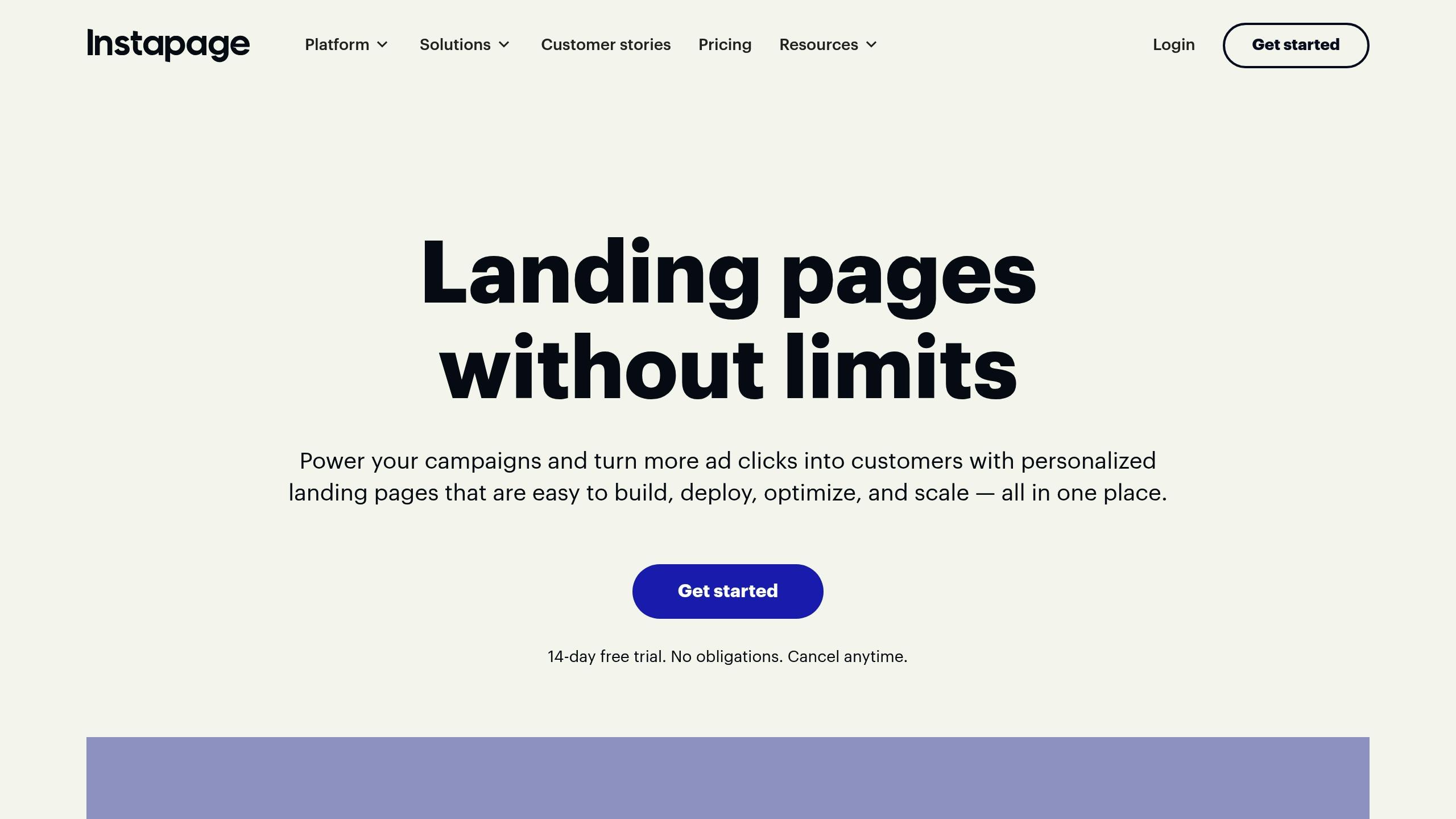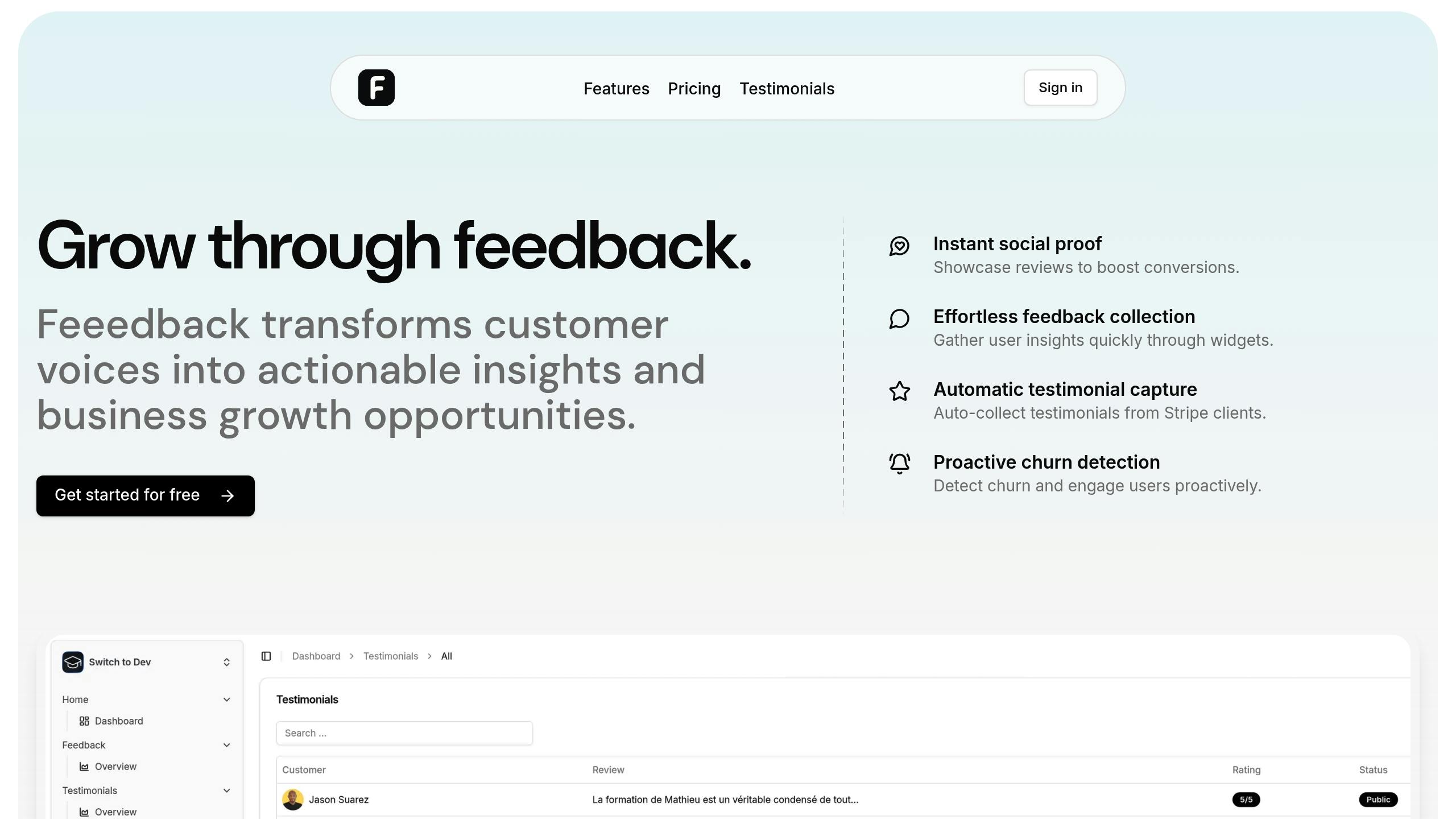Published Mar 25, 2025 ⦁ 7 min read

AI vs. Traditional A/B testing
AI-powered A/B testing or manual testing? Here’s the quick answer:
AI testing is faster, adapts in real time, and handles complex, multi-variable experiments. Manual testing is slower but works best for simple, controlled tests where transparency and control are critical.
Key Differences at a Glance:
- Speed: AI analyzes data in real time; manual testing takes longer.
- Complexity: AI handles multiple variables; manual testing focuses on one or two.
- Data Needs: AI requires large datasets; manual testing works with smaller samples.
- Control: Manual testing offers full control over variables; AI automates decisions.
Quick Comparison Table:
| Aspect | Traditional A/B Testing | AI-Powered Testing |
|---|---|---|
| Duration | Fixed, set schedule | Real-time adjustments |
| Sample Size | Predefined, static | Adaptive, changes dynamically |
| Analysis | Manual, statistical | Automated, machine learning |
| Variable Testing | Limited to a few | Handles multiple simultaneously |
When to use each:
- Use AI testing for large datasets, complex experiments, and fast insights.
- Use manual testing for simple comparisons, early-stage tests, or when full control is needed.
Best of both worlds? Start with manual testing for a baseline, then scale with AI for deeper insights.
Instapage Tutorial: Manual A/B Testing vs AI Testing

Main Differences: AI vs Manual Testing
Let’s dive into how AI-driven testing stacks up against traditional manual testing approaches.
Testing Speed Comparison
AI testing processes data in real time, adjusting samples dynamically to achieve results faster. In contrast, manual A/B testing takes longer, as it relies on extended periods to collect enough data for meaningful conclusions. AI’s ability to quickly identify variables significantly reduces testing time.
Data Analysis Methods
The primary difference lies in how each method handles data:
| Aspect | Manual Testing | AI Testing |
|---|---|---|
| Processing Speed | Slower due to manual reviews | Faster with automated systems |
| Pattern Recognition | Limited to predefined metrics | Identifies unexpected correlations |
| Bias Detection | Relies on human input | Uses automated anomaly detection |
| Decision Making | Based on fixed criteria | Adapts dynamically as data changes |
| Resource Requirements | Requires dedicated human analysts | Mostly automated, with minimal manual input |
These differences highlight how AI can streamline the analysis process compared to manual methods.
Test Size and Complexity
Manual testing typically limits the number of variables to ensure statistical accuracy. On the other hand, AI testing can handle multiple variables at once, making it better suited for complex experiments. This capability allows for deeper insights by analyzing various factors simultaneously.
Your choice between AI and manual testing depends on your goals and resources. While AI testing demands a strong initial setup and robust data systems, it offers faster and more comprehensive insights. Manual testing, however, is ideal for simpler experiments where transparency and control are key.
Benefits of AI Testing
AI testing offers practical advantages that can significantly improve digital optimization efforts. By leveraging AI-powered A/B testing, businesses can benefit from real-time updates, predictive insights, and the ability to test multiple variables simultaneously.
Real-Time Adjustments
AI testing eliminates the need for manual oversight by continuously analyzing data and making adjustments on the fly. Key features include:
- Dynamic Sample Sizing: Modifies sample sizes to achieve statistical significance more quickly.
- Traffic Allocation: Directs traffic toward the best-performing options.
- Risk Management: Automatically halts poorly performing variants to reduce potential losses.
Predicting User Behavior
AI uses a mix of past and current data to predict customer actions. Here's how it works:
| Prediction Type | What AI Analyzes | How It Helps Businesses |
|---|---|---|
| Conversion Probability | Patterns in user journeys | Improves conversion rates |
| Engagement Likelihood | Interaction history | Delivers more tailored content |
| Churn Risk | Usage and activity trends | Supports retention strategies |
| Feature Adoption | User preferences and habits | Guides product planning |
This predictive capability, combined with AI's testing tools, helps refine strategies more effectively.
Testing Multiple Variables
AI excels at managing complex multivariate tests, offering insights that traditional methods often miss. Benefits include:
- Simultaneous Testing: Analyzes several variables at once without compromising accuracy.
- Pattern Detection: Highlights unexpected combinations of factors that lead to success.
- Efficient Resource Use: Allocates testing resources based on real-time results, maximizing the value of insights across different user interactions.
These capabilities make AI testing a powerful tool for improving performance and decision-making.
sbb-itb-66470c1
Limits of AI Testing
AI-powered A/B testing brings benefits, but it also comes with challenges that can impact its effectiveness.
Data Quality Issues
The success of AI testing relies heavily on the quality and volume of the data it uses. Some common data-related issues include:
| Data Challenge | Impact | Mitigation Strategy |
|---|---|---|
| Insufficient Sample Size | Produces unreliable predictions and increases false positives | Use a dataset large enough to ensure accurate testing |
| Data Inconsistency | Distorts results and leads to misleading insights | Implement strong data validation processes |
| Historical Bias | Reinforces existing trends unintentionally | Regularly review and update training datasets to reduce bias |
| Seasonal Variations | Misinterprets short-term trends as patterns | Adjust analysis to account for seasonal cycles |
To overcome these challenges, maintaining high-quality data and a well-prepared system is essential.
Setup Requirements
Implementing AI testing requires more than just data. A solid setup is critical for success, including:
- Technical Infrastructure: You’ll need servers and systems capable of handling large-scale, real-time data processing.
- Integration Complexity: Setting up and calibrating the system can take considerable time and effort.
- Team Training: Staff often need specialized training to run and interpret AI-driven tests effectively.
- Cost Factors: The initial investment will depend on the size and complexity of your implementation.
These requirements highlight the importance of planning and resource allocation when deploying AI testing.
Understanding AI Decisions
One of the biggest challenges with AI testing is understanding how decisions are made. This can create three main hurdles:
-
Opaque Processes
- Outcomes can be hard to explain to stakeholders.
- Identifying what drives success becomes challenging.
- Troubleshooting unexpected results is more difficult.
-
Complex Interpretations
- Advanced methods may be needed to determine statistical significance.
- Isolating the effects of multiple variables is more complicated.
- Traditional metrics often need adjustments to suit the AI context.
-
Verification Requirements
- Results should be cross-checked with traditional testing methods.
- Regular audits of algorithm performance are essential.
- Human oversight is critical for major decisions.
These challenges don’t eliminate the usefulness of AI testing, but they do call for careful planning and thoughtful implementation.
Picking Your Testing Method
How to Decide
Your choice depends on factors like the size and complexity of your data, how quickly you need results, your budget, and available technical resources. AI-driven testing works well for analyzing complex datasets and delivering quick insights, while traditional methods are better for targeted, hypothesis-driven experiments. Here's a breakdown of when to use each.
When to Use Each Method
AI testing works best for:
- Experiments needing real-time adjustments with multiple variables
- Analyzing complex data to uncover patterns automatically
- Scenarios requiring personalized, automated testing
Traditional testing is ideal for:
- Focused experiments with just one or two variables
- Simple, smaller datasets
- Predefined success metrics that are easy to measure
Using Both Methods Together
Sometimes, combining both methods can give you the best results. Here's how:
-
Start with Traditional Testing
Use traditional methods to establish baselines and confirm your initial assumptions. -
Incorporate AI for Scaling
Once you have a foundation, apply AI to uncover deeper patterns and insights. Periodically return to traditional testing for validation to ensure your findings remain accurate.
This approach lets you benefit from AI's efficiency while keeping your results grounded and reliable.
Conclusion: Making the Right Choice
Key Differences at a Glance
AI testing is ideal for handling complex scenarios and delivering fast insights across multiple variables. On the other hand, traditional methods excel in controlled, focused experiments. The main distinctions lie in their processing speed, ability to handle variable complexity, resource demands, and the amount of data they require.
Understanding these differences can help you decide which approach best suits your testing goals.
Choosing the Right Path
If you're just starting out, traditional testing is a great way to handle basic experiments. As your data improves, and your technical skills and resources grow, you can move toward AI-powered solutions. This step-by-step approach builds a strong foundation while allowing you to fully leverage the strengths of both methods.
Boosting Your Strategy with Feeedback

Feeedback can take your testing strategy to the next level, whether you're using traditional methods or AI-driven tools. Here's how it adds value:
- Real-time feedback and sentiment tracking across various test scenarios
- AI-based analysis to uncover complex user behavior patterns
- Feature prioritization driven by real user data
Opting for Feeedback's Premium plan unlocks unlimited feedback collection, ensuring you have the data needed for impactful tests. By integrating this platform, your team can make smarter, data-backed decisions about testing and product development.